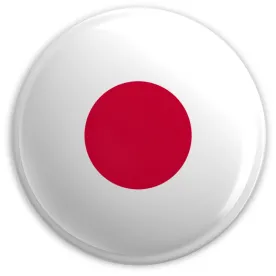This GT Advisory covers the following: |
1. how the annual price revision is implemented officially; 2. whether the R-zone should be revised; 3. how to improve the transparency of the pricing decision; 4. how to determine actual manufacturing costs of products priced by cost-based method, and; 5. how to improve the cost-effectiveness assessment system.
|
Japanese market share in the global pharmaceutical market declined from 12% in 2003 to 7% in 2019. Market size is an important factor in pharmaceutical companies’ decisions to invest in innovation. While some biotech companies, especially those concentrating on the development of high-priced therapy or orphan drugs, still view Japan as a standalone regional market or the second-largest market after the United States, more pharmaceutical companies are incorporating Japan into Asian or international territories together with China, which plays a comparable or even larger role than Japan. Japan is now struggling to sustain universal health care coverage and encourage innovation in the pharmaceutical industry, and the government has no choice but to respond.
By Announcing Its Vision Plan, Japanese Government Creates a Sense of Urgency to Strengthen Its Position as an Innovation Powerhouse
The Ministry of Health, Labor, and Welfare of Japan (MHLW) announced its new pharmaceutical industry vision in September 2021 (Vision Plan), thereby emphasizing the importance of the competitiveness of the pharmaceutical industry in Japan.
The contrast between the ability of Japan and the United States or European countries to bring the COVID-19 vaccine or treatment products to market over the past 18 months has made clear to Japan the importance of addressing its pharmaceutical industry’s competitive decline, although the country remains the third-largest new drug source. Some members of the ruling party in Japan, the Liberal Democratic Party (LDP), had expressed concern for Japan’s shrinking drug discovery capability and further organized a task force to address it. LDP has pledged to improve the industry, including drug pricing review, to ensure innovative drugs can be produced in Japan and supplied promptly and stably.
LDP task force members have reviewed the Vision Plan, which echoes the Growth Strategy adopted by the cabinet in June prioritizing pharmaceutical industry growth in Japan. The Vision Plan also highlights that economic security is an important element of the pharmaceutical industry strategy.
The Vision Plan lays out the government’s approach for the next decade to cope with challenges in drug discovery, generics, and drug distribution. The Vision Plan emphasizes the importance of predictability in future pricing of research and development (R&D) investment. The Plan also highlights the importance of financial resources to the pharmaceutical sector and vows to ensure support in this area. Specifically, the Vision Plan also aims to improve vaccine development competitiveness by transferring the national vaccine testing function from the National Institute of Infectious Diseases to the Pharmaceuticals and Medical Devices Agency.
The Vision Plan also sets key performance indicators for:
-
Number of top 100 products originating in Japan in terms of global sales;
-
Overseas sales of Japanese pharmaceutical companies;
-
Licensing activity in the Japanese pharmaceutical sector; and
-
Strength of R&D spending by Japanese drug makers.
.
Pressure on Government to Continue Taking Necessary Ad-Hoc Actions to Curb Health Care Expenditures Complicates Vision Plan’s Implementation
While the MHLW’s Vision Plan affirms the promotion of innovation in Japan and the importance of reimbursement if these policy objectives are to be accomplished, the industry has been struggling to thrive in the deteriorating environment over the past few years.
In Japan, drug pricing is set by the Central Social Insurance Medical Council (Chuikyo), an advisory body to the MHLW. Drug pricing revisions used to be made once every two years alongside the regular medical service fee revision. However, drugs will be exempted from the annual price revision if they meet the criteria of the price maintenance premium (PMP). In 2018, to ensure PMP actually fostered the development of innovative drugs, the MHLW further defined the scope of products eligible for PMP and introduced company criteria that grouped eligible drug makers into three tiers based on their innovative drug development efforts and other factors.
Japan’s reimbursement scheme uses repricing rules, optimal use promotion guidelines, and cost-effectiveness assessments (CEA) to moderate the fiscal impact of costly or high-priced therapies with large budget impacts to the annual health care expenditure.
For example, the repricing rule imposes sizable cuts on products generating better-than-expected growth driven by additional indications or other circumstances. Drugs with similar modes of action to products already subject to the rule also face repricing unless they meet exclusion criteria. (The current exclusion criteria apply to drugs with a low degree of competition based on their sales, the timing of listings, and the scope of indications.) The Merck Sharp & Dohme Corp. immuno-oncology (I/O) therapy drug Keytruda has been repeatedly impacted by this rule over the past year and underwent an additional 11.5% price cut in 2021 due to a spillover from Chugai’s Tecentriq. The same price cut was also applied to two other drugs in the same I/O class as Ono’s Opdivo and AstraZeneca’s Imfinzi.
In 2021, the government revised 70% of National Health Insurance (NHI) listed drugs prices. The impact went beyond industry expectations, leading to some alarm regarding the predictability of reimbursement practices.
Finance Minister Shun’ichi Suzuki, Health Minister Shigeyuki Goto, and other relevant ministers may meet to make political decisions about the next reforms, as new Prime Minister Fumio Kishida pledges to raise wages for health care workers, which could further constrain already-tight health finances. Further, current senior personnel, including Hirotaka Unami, Genichi Osawa, Takashi Akuzawa, Jun Hitomatsu, etc., who all have been involved in drug cost containment measures, are renowned for their knowledge of and concern for the sustainability of health care expenditure in Japan. Given that there has been no mid-term plan published for drug cost containment in 2021, the next reform could come soon.
Pricing Reform May Occur Soon; Drastic Changes Not Expected
Fiscal Year (FY) 2022 revisions could lead to more drug pricing reform. While there are no details available, the government potentially will avoid drastic rule changes impacting specific products or diseases. Principal pricing methodology and negotiation approaches may remain, though some minor revisions to the current pricing rule may be made to address high-priced drugs, including cell/gene therapy.
FY 2022 revisions to patented drug manufacturers could include the following:
How annual price revision is officially implemented. In 2016, concern over the substantial cost of programmed cell death protein 1 (PD-1) inhibitor and hepatitis C medications led to the Four Minister Agreement, which called for annual price revisions for products with large price discrepancies between NHI and market prices, as well as quarterly price reviews for products expanding indications. The biannual price revision remains in place with off-year or ad-hoc price revision. An official annual price revision is to be introduced to increase the predictability of the reimbursement process.
Revision to the adjustment rate. New NHI prices are usually based on products’ market prices plus the addition of the 2% adjustment rate, previously called the “reasonable zone” (R-zone). This adjustment rate has remained unchanged over two decades. The government’s increased interest in revising the adjustment rate may trim unnecessary budget waste due to this 2% guarantee.
Enhancement of transparency in pricing decisions. Price calculation process transparency has been long debated. Some stakeholders argue that the final reimbursed price is comparable to pharmaceutical companies’ asking price, so the MHLW will disclose the meeting minutes from drug pricing discussions to ensure the transparency and appropriateness of the calculation.
Clarification of the actual manufacturing costs of products priced by the cost-based method. The cost-based method is used to calculate new drug prices when there are no alternative drugs to use in the reference pricing approach. This method is commonly used for rare diseases or new technology products with no comparable drugs. Most high-priced drugs obtain reimbursement via this method. In the past, the MHLW tried to reduce the rate of launch premiums by up to 80%, but to address the increasing number of high-priced drugs, such as cell and gene therapies, the MHLW may stipulate more initiatives to “motivate” companies to disclose manufacturing costs and transferring prices.
Improvement of the cost-effectiveness assessment (CEA) system. The CEA system was introduced in April 2019 for post-launch price adjustments but not reimbursement decisions. Under the scheme, selected products will undergo CEA analyses within manufacturers; those analysis results will then be reviewed by public analysis groups consisting of academics, and appraisals will be conducted by the CEA organization. The challenge to complete comparative assessment of company CEA and to build the analysis framework in a timely manner, as well as the lack of concrete rules regarding analysis period or method of appraisal on additional indications, may be addressed in the next revision.
Next Steps
Japan seeks to turn around its declining market position and industry competitiveness over the next decade. Policy makers are tasked with balancing corporate interests with public policy. Compared to the Abe administration, the discussion within the LDP in the Kishida administration is expected to influence policy decisions significantly. Successful engagement and effective communication with Diet members will become more critical to addressing industry concerns.




 />i
/>i

